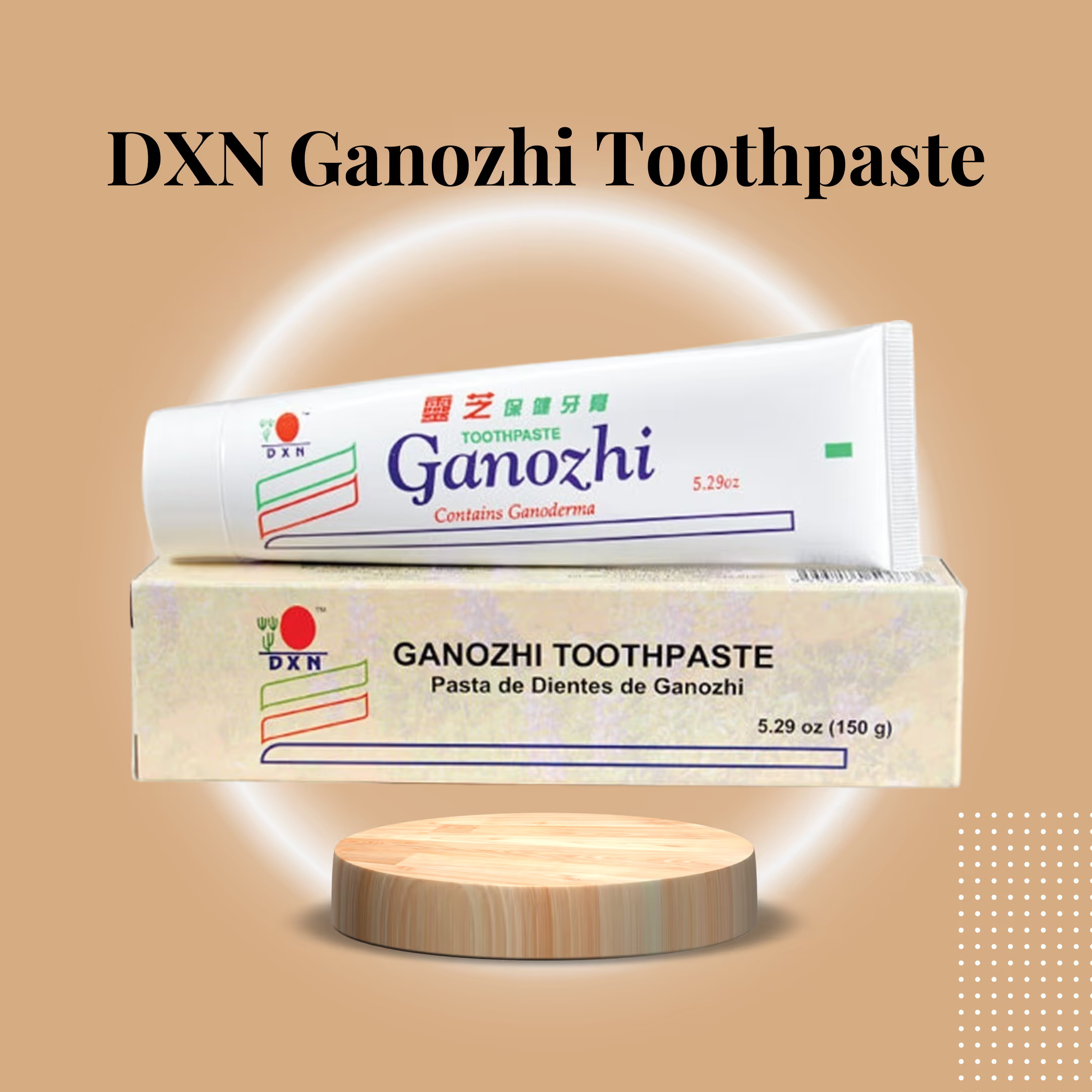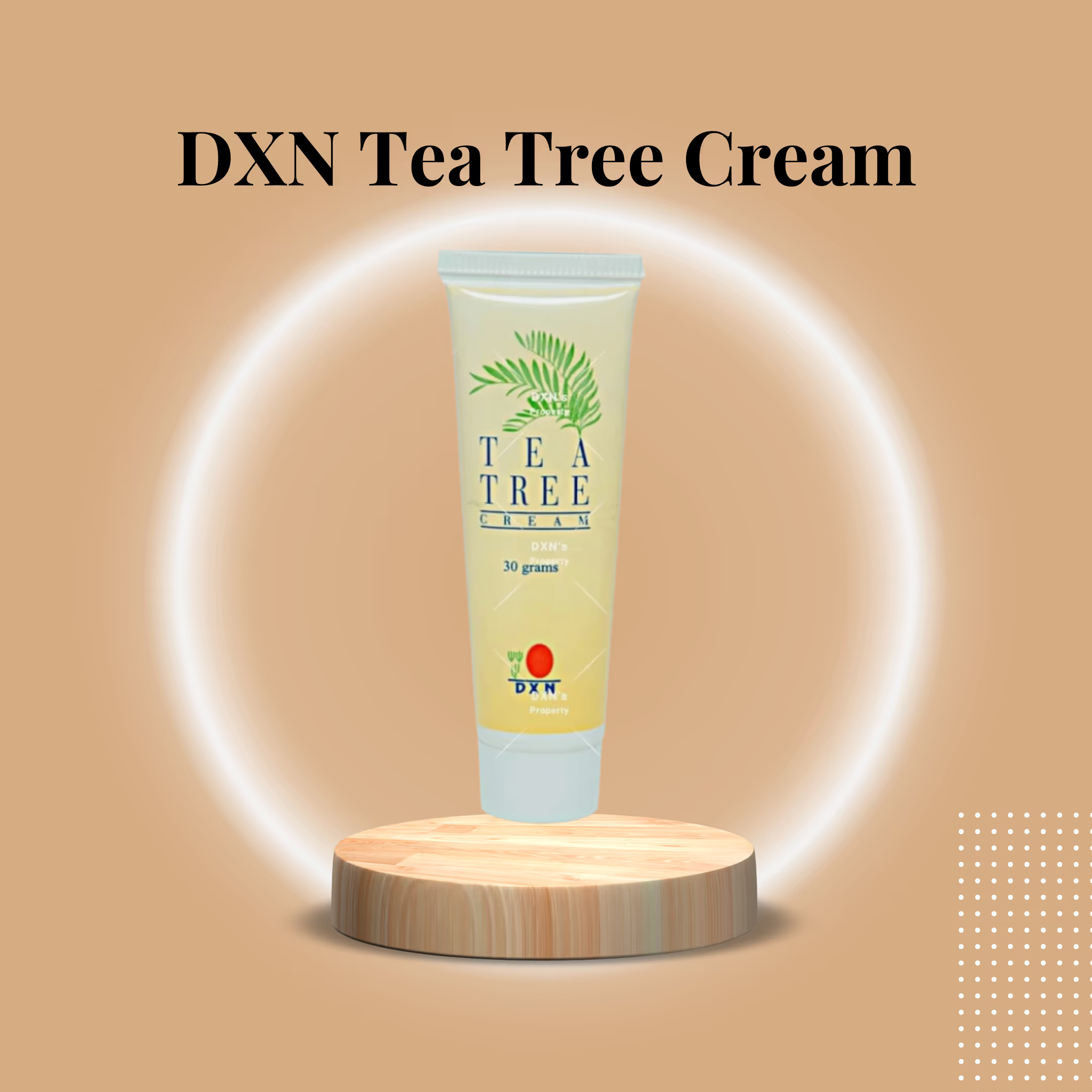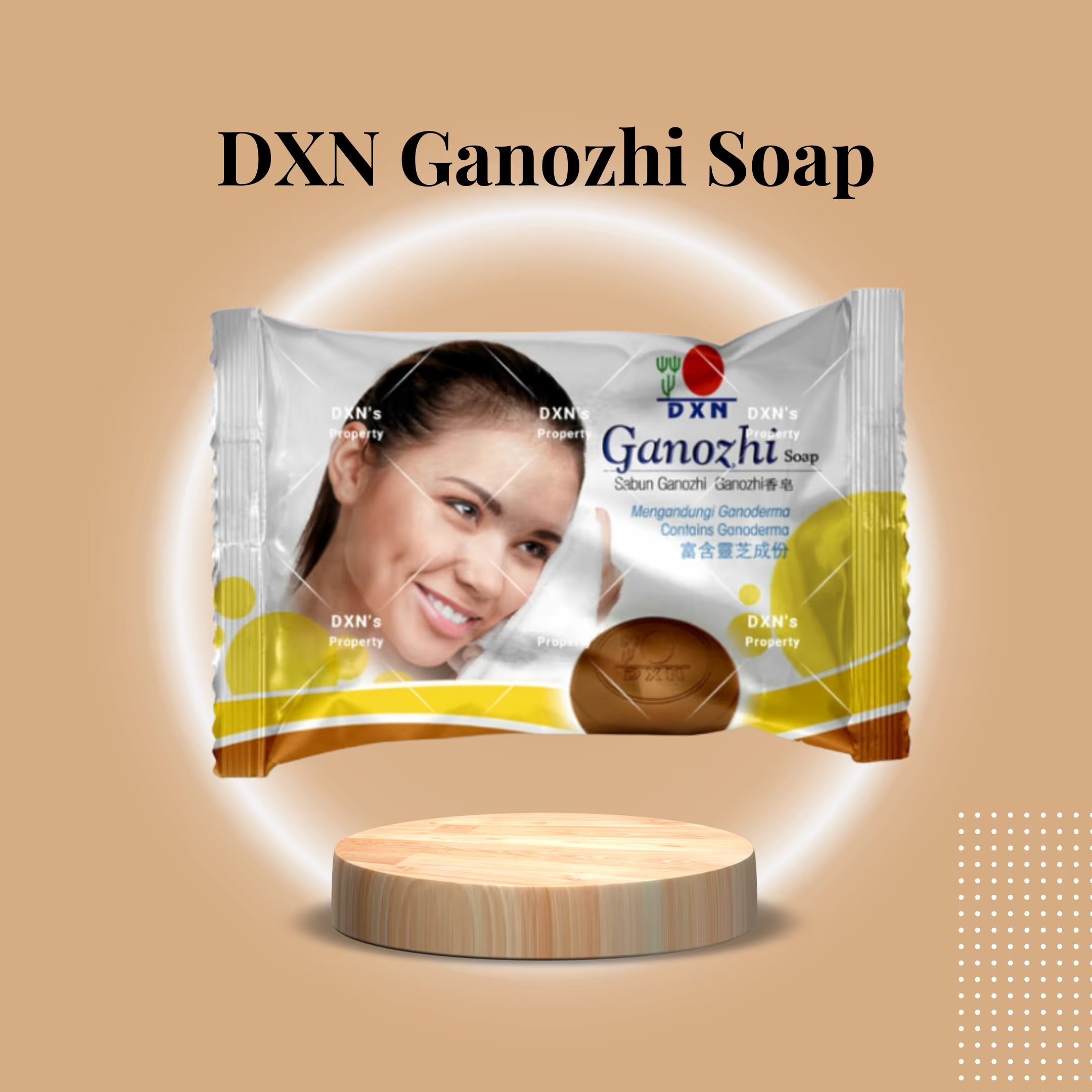The shifting landscape of oral care: from intervention to ecology
Conventional toothpaste formulations historically focused on chemical solutions to common problems: fluoride to fortify enamel and synthetic surfactants to produce abundant foam and rapid plaque removal. Those products have delivered clear public health benefits — but they have also sparked a parallel movement: people wary of chemical exposure, mucosal irritation, or systemic accumulation have begun seeking gentler, more natural alternatives.
DXN Ganozhi Toothpaste embodies that shift. Its philosophy is ecological rather than purely interventional: instead of chemically modifying tooth structure as a primary strategy, it aims to nurture the oral microbiome, suppress pathogenic species through botanical antimicrobials, reduce inflammation, and maintain a tissue-friendly chemical environment. This is a different pathway to the same endpoint: lower disease risk and healthier oral tissues — achieved through nature-inspired chemistry rather than synthetic heavy lifting.
What’s inside the tube: ingredient overview and function
Ganozhi’s ingredient roster has been selected to achieve cleaning efficacy, sensory comfort, and therapeutic support without common irritants (notably, it avoids fluoride, saccharin, artificial dyes, SLS/SLES, and parabens). Here’s a breakdown of the most functionally significant components and why they matter:
Ganoderma lucidum extract (Reishi)
The distinctive hallmark of this paste is Reishi extract. Historically celebrated in East Asian medicine, Ganoderma contains several classes of bioactive phytochemicals — notably triterpenoids, polysaccharides, and various phenolic compounds. These activities are credited with:
- Antimicrobial effects: disrupt or inhibit common oral pathogens and interfere with the formation of biofilms.
- Anti-inflammatory modulation: reduces pro-inflammatory cytokine signaling that underlies gingivitis and periodontal disease.
- Antioxidant protection: neutralizes reactive species that can accelerate tissue damage.
Together, these activities support the idea of transforming the mouth into a less hospitable environment for disease while promoting tissue repair and regeneration.
Xylitol
A naturally occurring sugar alcohol, xylitol serves multiple roles:
- Provides a pleasant sweetness without feeding cariogenic bacteria.
- Interferes with the metabolism of Streptococcus mutans, reducing acid production.
- Promotes salivary flow and a more neutral pH after carbohydrate exposure.
Evidence supports the role of xylitol in reducing plaque and caries risk when used consistently.
Dicalcium Phosphate (DCP)
DCP functions as a mild abrasive and polishing agent. It helps remove extrinsic stains and plaque without excessive abrasion to enamel. In this formulation, the aim is gentle mechanical cleaning rather than chemically aggressive whitening.
Sodium Lauryl Sarcosinate
This is a milder surfactant alternative to SLS/SLES. It generates foam and helps suspend and remove debris, with a lower potential for mucosal irritation. For individuals prone to canker sores or sensitivity, sarcosinate is often better tolerated.
Peppermint oil & menthol
Beyond flavor, these essentials provide a cooling, antiseptic sensation that supports the perception of long-lasting freshness. Menthol also exerts mild analgesic and antiseptic properties.
Carrageenan & Cellulose gum
These natural thickeners stabilize the paste, providing a familiar texture and spreadability that ensures the actives remain well-dispersed.
Glycerin & Sorbitol
Humectants that preserve paste moisture and prevent hardening, while also contributing to a pleasant mouthfeel.
How the formulation works together: synergy and functional logic
The real advantage of Ganozhi is how these ingredients complement one another:
- Mechanical cleaning (DCP + surfactant) removes biofilm and stains.
- Biological control (Ganoderma + xylitol) reduces pathogenic populations and interrupts biofilm re-formation;
- Tissue support (Ganoderma polysaccharides + glycerin) soothes mucosa and reduces inflammatory signaling.
- User acceptability (menthol, peppermint, smooth texture) ensures adherence to a twice-daily routine.
Put simply, the paste aims to be effective without being aggressive — supporting the mouth’s natural defenses rather than overriding them with harsh chemicals.
The science behind Genoderma (Reishi) in oral health
Several molecular mechanisms make Ganoderma a compelling botanical for oral care:
1. Antimicrobial and anti-biofilm activity
Triterpenoids and phenolic constituents have been shown in laboratory settings to inhibit both Gram-positive and Gram-negative bacteria, as well as interfere with microbial biofilms. Biofilms are the root architecture of plaque — if you can prevent biofilm establishment, you prevent many downstream problems (cavities, gingivitis, periodontitis).
2. Modulation of inflammatory mediators
Polysaccharide fractions of Ganoderma can modulate immune responses, thereby reducing the excessive production of inflammatory cytokines, including IL-1β, TNF-α, and IL-6. Chronically elevated inflammatory signals contribute to tissue breakdown in periodontal disease; dampening that response supports healing and stability.
3. Antioxidant protection
Reactive oxygen species (ROS) generated by bacterial metabolism and by host immune cells can damage connective tissue. Antioxidants in Ganoderma neutralize ROS, protecting collagen and other extracellular matrix components.
4. Synergy with mechanical measures
Botanicals are rarely a silver bullet. Their real power lies in complementing mechanical removal (brushing, flossing) and other behavioral measures (diet, smoking cessation). Ganoderma acts as a biochemical defense layer to strengthen the effects of routine oral hygiene.
Clinical endpoints and expected benefits
While consumer experiences vary, the combined mode of action suggests these likely outcomes with consistent use:
- Improved gum health: reduction in bleeding on probing and gingival inflammation as inflammatory signaling diminishes.
- Better breath: reduction in odor-causing anaerobes and lingering volatile sulfur compounds.
- Natural brightening: gradual removal of surface stains via gentle polishing and consistent disruption of plaque buildup.
- Reduced cavity risk: xylitol’s anti-cariogenic effect works synergistically with improved oral ecology to lower demineralization pressure.
- Enhanced comfort for sensitive mouths: fewer incidents of mucosal irritation compared with SLS-containing pastes.
It’s essential to note that for aggressive diseases (advanced periodontitis, deep caries), a support-not-replace approach is appropriate: the paste serves as an adjunct to professional care, not a substitute for targeted clinical interventions.
Usage recommendations and practical tips
To maximize benefit:
- Twice daily brushing: standard two-minute sessions remain the cornerstone. Use a pea-sized amount of the paste for the face.
- Technique matters: gentle, circular strokes along the gum line remove plaque while protecting marginal tissues.
- Supplement with flossing: mechanical interproximal cleaning is essential. The toothpaste’s biological effects cannot substitute for flossing.
- Rinse strategy: rinse lightly after brushing to remove loosened debris, but avoid vigorous gargling that strips salivary protective proteins.
- Diet & habits: reduce frequent sugar exposure and acidic drinks; the benefits of xylitol are maximized when sugar intake is controlled.
- Children: For kids under six, supervision and a smaller amount are recommended. The fluoride-free formulation mitigates ingestion concerns, but supervision remains the best practice.
Safety, tolerability, and special populations
- Allergy considerations: Peppermint and menthol, as well as botanical extracts, can cause sensitivities in a small subset of individuals. Patch testing or a brief tolerance check is advisable for individuals with known sensitivity to essential oils.
- Oral lesions: If you have active mucosal ulcers or severe irritation, consult a dentist before switching products. Mild improvements are common, but clinical conditions warrant professional oversight.
- Pregnancy & systemic effects: Topical oral products have limited systemic absorption, especially as rinse-off products. However, if you have specific concerns, discuss with your clinician.
- Children & fluoride: The fluoride-free approach is often chosen to minimize the risk of fluorosis from swallowing. For communities with inadequate fluoride exposure, consult your dentist about the best prevention strategy for your child.
Comparing philosophies: fluoride intervention vs ecological maintenance
This toothpaste adopts an ecology-first stance. Conventional fluoride-based products employ a direct, chemical pathway to strengthen enamel and reduce caries, making them proven public health tools. In contrast, Ganozhi promotes an environment hostile to pathogenic bacteria while enhancing tissue resilience — an indirect but biologically plausible route to prevention that appeals to those wary of ongoing chemical exposure.
A balanced view recognizes that both models can be valid. Individuals with high caries risk or limited access to dental care might still benefit from fluoride. Others seeking to minimize daily chemical load or who struggle with mucosal irritation may prefer an ecological approach. Discuss with your dental professional if you are unsure which strategy best fits your personal risk profile.
Real-world feedback: what users commonly report
Anecdotal and user-reported outcomes typically include:
- Noticeably fresher breath and longer-lasting clean sensation.
- Reduced gum bleeding during and after brushing within a few weeks of consistent use.
- Less irritation or fewer canker sore flare-ups compared with SLS-containing toothpastes.
- Gentle brightening of teeth after steady use over several weeks, not overnight whitening.
- Some users appreciate the clean ingredient list and the perceived alignment with wellness.
These reports align with the product’s design: modest, sustainable improvements in oral ecology rather than dramatic cosmetic results.
Where Ganozhi fits in a broader oral-body wellness regimen
Modern oral care is increasingly integrated with systemic health practices. Key complements to Ganozhi Toothpaste include:
- Regular dental checkups and professional hygiene to remove calculus and monitor periodontal status.
- Adjunctive products such as alcohol-free mouthwashes or xylitol mints for between-meal freshness.
- Dietary measures: limiting fermentable sugars and balancing pH with alkaline foods after meals.
- Lifestyle adjustments, such as smoking cessation and stress reduction, both of which significantly impact oral microbiology.
Because Ganozhi emphasizes a gentle, ecological approach, it naturally aligns with these broader wellness initiatives.
.avif)





